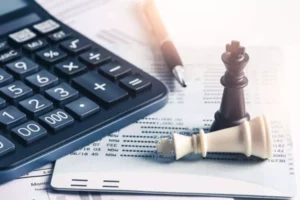Content
- Full length articleExploring investor views on accounting for R&D costs under IAS 38
- Business Development
- R&D Expense: Operating Expense on Income Statement
- What Are Research and Development (R&D) Expenses?
- The accounting for research and development costs under IFRS can be significantly more complex than under US GAAP.
- Accounting for Research and Development Activity

Instead, companies need to evaluate technical feasibility in relation to each specific project. Projects related to new product developments are generally more difficult to substantiate than projects in which the entity has more experience. Businesses conduct R&D for many reasons, the first and foremost being new product research and development.

This will likely be a significant undertaking for taxpayers to comply with the TCJA changes based on the broad and subjective nature of these provisions. “Development” is the translation of research findings or other knowledge into a plan or design for a new product or process or for a significant improvement to an existing product or process whether intended for sale or use. It includes the conceptual formulation, design, and testing of product alternatives, construction of prototypes, and operation of pilot plants. We learned in this article that proper tracking of direct and indirect costs, as well as choosing the accounting method fit for your business are key steps in proper R&D costs accounting.
Full length articleExploring investor views on accounting for R&D costs under IAS 38
The general partner typically reports its current expenses as the cost of services delivered, but the limited partners report their costs as R&D expenses. Research and Development (R&D) is a process by which a company obtains new knowledge and uses it to improve existing products and introduce new ones to its operations. R&D is a systematic investigation with the objective of introducing innovations to the company’s current accounting for research and development product offerings. It achieves this by adding improvements to the current goods and services or introducing a new product offering. R&D expenses include the original development and design of the product, as well as any enhancements you and your team choose to make over time. R&D expenses are included within the overall operating expenses and typically reflected as an individual line item on an income statement.
There is a presumption that the fair value (and therefore the cost) of an intangible asset acquired in a business combination can be measured reliably. IAS 38 was revised in March 2004 and applies to intangible assets acquired in business combinations occurring on or after 31 March 2004, or otherwise to other intangible assets for annual periods beginning on or after 31 March 2004. Research and development costs must be capitalized and amortized over 20 years or less. Research and development costs must be capitalized and amortized over 70 years or less. R&D intangible assets (in-process R&D, or IPR&D) may be acquired rather than developed internally.
Business Development
Under Section 41, Taxpayers are permitted to include certain R&D costs as QREs for purposes of Section 41 related to activities that meet a four-part test defined under Section 41(d)(1). This includes in-house research expenses—such as wages paid to employees performing qualified services, supplies used in the conduct of qualified research, and costs for computer rental (e.g., cloud computing) used in the conduct of qualified research. This also includes contract research expenses, which are 65% of any amount paid or incurred by the taxpayer to any person (other than an employee of the taxpayer) for qualified research. Managing research and development costs is a key factor in the success of any R&D team. Automation of data collection and analysis processes can help reduce overhead costs while leveraging technology to streamline workflows can increase efficiency.
- Accounting standards require companies to expense all research and development expenditures as incurred.
- IAS 38 Intangible Assets outlines the accounting requirements for intangible assets, which are non-monetary assets which are without physical substance and identifiable (either being separable or arising from contractual or other legal rights).
- The regulations provide further guidance as to the nature of expenses that qualify under Section 174.
- Given the global quest for scientific talent and manpower, it is unlikely that digital companies would fire those employees in the short term with the hope of rehiring them in future.
- For states that leverage components of the federal income tax return, this could increase the tax liability at the state level.
- (c)Indirect R&D expenditures shall be fairly attributed to R&D and expensed (except general and administrative costs, which must be clearly connected to be included).
- Uncertainty relates to the capability, methodology, or design of a new or improved product.
IAS 38 Intangible Assets outlines the accounting requirements for intangible assets, which are non-monetary assets which are without physical substance and identifiable (either being separable or arising from contractual or other legal rights). It is important to note that there are exceptions to the rule of recording R&D as expenses. In some cases, when a business can recognize the fair value of research and development costs, they can be recorded as an asset and treated as such. An example may be a specialized software developed or purchased for research purposes, or a fixed asset that has an alternative future use. Although there is bipartisan support for legislation postponing this change under Section 174, Congress failed to defer or repeal the new capitalization rules in 2022.
R&D Expense: Operating Expense on Income Statement
The study makes significant contributions to the standard setting and R&D strands of the financial accounting literature and the findings raise important policy implications. This reliance on external partners is no different than leasing assets or purchasing raw materials for a physical product company. Therefore, digital firms’ R&D expenses include the costs of obtaining outside services, consulting, and code modification and integration, all of which are necessary for seamless operations.
Utilizing outsourcing solutions to cut down on labor-intensive tasks can also be beneficial for reducing expenses. Under U.S. GAAP, the majority of research and development costs (R&D) must be expensed in the current period due to the uncertainty surrounding any future economic benefit. R&D providers must also expense the costs of performing R&D service for customers. However, the provider must report these expenses as the cost of services delivered, which it subtracts from revenue to determine gross income. Sometimes, two or more interested parties form limited partnerships to pursue a particular line of R&D. In this case, the funding comes from the limited partners and the general partner manages the contractual obligations and technical aspects.
These determinations will need to be considered when identifying Section 174 costs under either the Section 41 QRE or book R&D expense methods. As defined in Section 3401(a), the term “wages” means all remuneration for services performed by an employee for his employer (i.e., Form W-2, Box 1 amount). For self-employed individuals and owner-employees, the term “wages” includes the earned income (i.e., net earnings) of such employee. In addition to the examples in the regulations, interpretive guidance has been issued over the years that provides some insight regarding what costs are subject to Section 174 treatment. By utilizing the strategies discussed in this article, research and development teams can reduce costs while still achieving their desired results. Leveraging technology such as artificial intelligence (AI) or machine learning (ML) algorithms can help automate tedious tasks like document review or image recognition which would otherwise require significant manual effort.
Tech companies rely heavily on their research and development capabilities, so they have relatively outsized R&D expenses. In a constantly changing environment, it’s important for such a company to remain on the bleeding edge of innovation. For example, Meta (META), formerly Facebook, invests heavily in the research and development of products such as virtual reality and predictive AI chatbots.
Research and Development (R&D)
Under US GAAP, R&D costs within the scope of ASC 7301 are expensed as incurred. US GAAP also has specific requirements for motion picture films, website development, cloud computing costs and software development costs. Other costs to consider include the cloud infrastructure, version control services and any other software or tools used to create the design or development of your product, along with the costs incurred if you file for a patent on your design or innovation.
Is R&D a fixed or variable cost?
Research and development cost is regarded as an investment in the future. They would be incurred because of policy decisions by the management. That is why they are considered as a discretionary fixed cost.
Expect future articles addressing the definition of a business under finalized amendments to IFRS and any differences from US GAAP, and the accounting for IPR&D. Sign up for our email list to stay updated on the latest tax news and financial planning advice. Large companies have also been able to conduct R&D through acquisition by investing in or subsidizing some of those smaller companies’ costs or acquiring them outright. PwC refers to the US member firm or one of its subsidiaries or affiliates, and may sometimes refer to the PwC network. This content is for general information purposes only, and should not be used as a substitute for consultation with professional advisors.
When a company spends money on R&D, whether through purchased services or through its own R&D department, it must record the cost as an expense in the period incurred, reports the Corporate Finance Institute. This includes the cost of materials, equipment and facilities that have no alternative futures – that is, items that the company doesn’t use for other purposes. The starting point for companies applying IFRS is to differentiate between costs that are related to ‘research’ activities versus those related to ‘development’ activities.
The discussion below provides insights into the definition of “costs” subject to Section 174 treatment. Because most taxpayers will need to reconcile costs treated as QREs under Section 41 and/or book R&D expense as defined under ASC 740 to determine Section 174 costs, this article also includes an analysis of these costs. Taxpayers may have the option of using QREs used for computing the R&D credit under Section 41 or ASC 730 book R&D expense as an appropriate starting point to compute Section 174. The QRE approach would require several steps to “convert” QREs to Section 174 costs and to determine costs incurred incident to the research.
While R&D costs can easily accumulate over time (and often not create any results of any significance), the R&D can pay off if there is a breakthrough that can directly lead to long-term profitability and a sustainable competitive advantage. The information contained herein is of a general nature and is not intended to address the circumstances of any particular individual or entity. Although we endeavor to provide accurate and timely information, there can be no guarantee that such information is accurate as of the date it is received or that it will continue to be accurate in the future. No one should act upon such information without appropriate professional advice after a thorough examination of the particular situation. Meta’s 2014 acquisition of Oculus Rift is an example of R&D expenses through acquisition.
- Accounting treatment of these intangible assets, however, differs between U.S.
- In some cases, when a business can recognize the fair value of research and development costs, they can be recorded as an asset and treated as such.
- The TCJA removed the requirement that a cost can only be a Section 174 R&E expenditure to the extent that the cost is reasonable under the circumstances.
- Reporting research and development costs poses incredibly difficult challenges for accountants.
- However, the amount capitalized and the differences between IFRS and US GAAP depend on whether a ‘business’ or a single asset/group of assets is acquired.
- Contact Grant Thornton LLP or other tax professionals prior to taking any action based upon this information.
